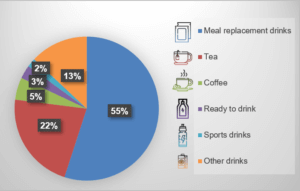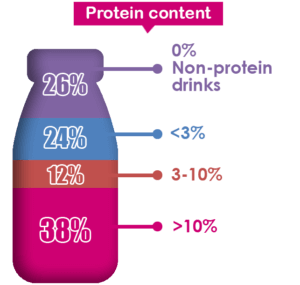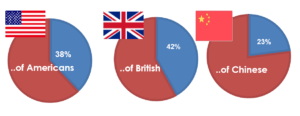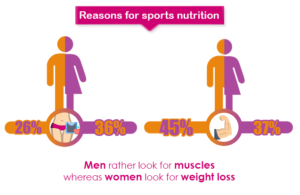The importance of proteins in the current weight management market
21 July 2020
Over 2 billion people are currently overweight in the world, and this number keeps growing every year.1 Overweight is defined as a BMI* greater than or equal to 25 whereas obesity is defined as a BMI* greater than or equal to 30.1
Being overweight is commonly known to be a risk factor for cardiovascular diseases, musculoskeletal disorders and cancers.1
Over 80% of teenagers are not physically active enough.1 2 A sedentary lifestyle has an impact on their lifestyle habits, including their health. A study on excess weight risks factors among 13-14 teenagers has shown that depending on social background and gender, overtime spent watching screens, skipping breakfast and not practicing any sport could be correlated to weight gain.3 Overweight and obesity among teenagers is a global public health concern, as this category of the population have high risks to encounter health issues during adulthood.1

What are consumers’ concerns about their weight?
A survey has shown that 48% of the global population is currently concerned about being overweight in the future (Euromonitor International, 2020). Nowadays, the general population is well-aware of the excessive weight gain risks and is concerned about its health, especially its well-being. A biennial survey has shown that higher rates of people attempted to lose weight in 2015-2016 compared to 2007-2008 (almost 50% of American adults).4
Plus, with Summer, many people want to manage their weight. Consumers want to feel emotionally and physically good about their body.

What are the product categories for managing weight?
Two categories of products are positioned on the managing weight products market.
- The first category is the weight management products. It targets people who would like to lose weight without exercising. These products have the following benefits: full or partial meal replacing, designed to create the required calorie deficit to lose weight, often rich in proteins and fibers. The weight management products market growth tends to stay constant and to even decrease (Mintel, 2019).
- The second category is the active nutrition products.
Consumers’ interest shifts to exercising coupled with active nutrition products. This new trend will be detailed in a later part of this article.
What kind of weight management products can we find?
For the past year, meal replacement drinks with slimming claims were the main launched products as sales represent 55% of the weight management market (Figure 1).

Figure 1: Drinks categories with slimming claims (drinks launched between 04/2019 and 06/2020) (Mintel, 2020)
The highest meal replacement drinks demands are in Asia Pacific (49% of the sales) (Euromonitor, 2020).
A majority of the drinks with slimming claims contain proteins (74%, which 38% contain more than 10% proteins) (Figure 2).

Figure 2: Protein-content of drinks with slimming claims (Mintel, 2020)
The rest of the weight management market is represented by 45% of food products (snack bars, breakfast cereals, bakery products…). 88% contain proteins.
It seems that a lot of the slimming products contain proteins. What are consumers’ thoughts about them?
In order to lose weight, many consumers pay more attention to the content of their diet. Some of them tend to increase their protein intake by having high-protein diets (Figure 3).

Figure 3: Increase of protein intake for weight loss goals in American, British and Chinese population (Mintel, 2016 )
70% of the general population recognizes the importance of having the right protein intake levels daily (FMCG Gurus, 2018).
Why are proteins a key component in weight management?
Proteins are mainly used for the following abilities:
- Increasing of satiety; this will help people who want to have a better management of their weight.5 6
- Proteins increase our energy expenditures.5
- Muscle gain; proteins are rich in all essential amino acids, including Leucin which function is to synthesize muscles. It also reduces lean body mass loss.5 7
Milk proteins are well adapted for weight management diets as they have an excellent amino-acid profile.
For more detailed information on proteins’ benefits on weight management, please refer to our last articles on weight management “The interest of proteins in weight management” and “The added interest of milk proteins for weight management”.
As mentioned previously, the weight management market growth is very low, due to more and more consumers turning to active nutrition.

Why are consumers shifting from weight management products to active nutrition?
Active nutrition is part of sports nutrition. The sports nutrition sales growth shows that it is a promising market with global sales of 12.7 billion dollar in 2018, and a growth of +8.4% (CAGR 2018-2023) (Euromonitor International, 2020).
Action nutrition can be defined as a “healthy lifestyle choice with the primary objective of optimizing both physical and mental performance”.8
In the past, products were specialized for weight management and were marketed for overweight people. Now, people want to maintain their weight and stay fit, as sport and nutrition are now recognised as pillars of wellness and take part of active people’s life balance. Consumers look for functional nutrients, such as proteins. 32% of adults aged 45-54 consider personal fitness to be an important part of their identity.9
Products that are generally launched in active nutrition are “on-the-go” products: “ready-to-drink” products, high protein bars and shakes.

Is weight loss a key component of sports nutrition?
Weight loss is a key component of sports nutrition marketing with high protein products, specially drinks. A survey of Euromonitor (2019) shows that the reasons for sports nutrition consumption differ for men and women. 36% of women and 26% of men consume nutritional products to lose weight. 37% of women and 45% of men look for strength and muscle tone. Women tend to look more for weight loss than men, to whom muscle tone is more important. Slogans can be observed on packaging, like the catch phrase “strong is the new skinny”.10

I need to gain weight. Are consuming proteins also beneficial for me?
Apart from wanting to lose weight or gain muscles, some people may also need to gain weight, such as seniors or undernourished people. It is recommended to use high protein drinks with high nutritional content to maintain weight and prevent sarcopenia.

To conclude, proteins are a key ingredient to manage weight. They can be used to lose, maintain or gain weight at a healthy level.
Nowadays weight management applies to any type of consumer, with high protein food and drinks as an excellent ally.
For more information and any inquiry, contact us.
Authors: Sandrine Tran & Elsa Trotier.
*BMI: Body Mass Index.
________________________________________________________________________________________________
[1] WHO, 2020. Obesity and overweight. https://www.who.int/news-room/fact-sheets/detail/obesity-and-overweight (consulted on 06.18.2020)
[2] WHO, 2019. To grow up healthy, children need to sit less and play more. https://www.who.int/news-room/detail/24-04-2019-to-grow-up-healthy-children-need-to-sit-less-and-play-more (consulted on 06.18.2020)
[3] Guignon N., et al., 2019. En 2017, des adolescents plutôt en meilleure santé physique mais plus souvent en surcharge pondérale. Direction de la recherche, des études, de l’évaluation et des statistiques. Volume 1122, August 2019. Pages 1-6. https://drees.solidarites-sante.gouv.fr/IMG/pdf/er1122.pdf (consulted on 06.18.2020)
[4] Euromonitor, 2018. Passport, New Visions of Weight Management: A 2018 Update on Trends and Innovations.
[5] Paddon-Jones, E. Westman, R.D. Mattes, R.R. Wolfe, A. Astrup, M. Westerterp-Plantenga, 2008. Protein, weight management, and satiety. The American Journal of Clinical Nutrition, Volume 87, Issue 5, May 2008, Pages 1558S–1561S. Pub May 01, 2008. https://doi.org/10.1093/ajcn/87.5.1558S (consulted on 17.06.2020)
[6] Soenen S., Westerterp-Plantenga, Margriet S., 2008. Proteins and satiety: implications for weight management. Clinical Nutrition and Metabolic Care. Vol 11:6, 747-751. Pub November 2008. https://doi.org/10.1097/MCO.0b013e328311a8c4 (consulted on 17.06.2020)
[7] Tappy, 1996. Thermic effect of food and sympathetis nervous system activity in humans. Reprod Nutr Dev. 36(4):391-7. Pub 1996.
[8] Euromonitor International, 2016. Passport. What is “Active Nutrition” and how can health and wellness players leverage the concept?
[9] Mintel, 2019. Optimum nutrition launches products geared towards adults 40%.
[10] Euromonitor, December 2018. Passport, New Visions of Weight Management: A 2018 Update on Trends and Innovations.